Our mission to Light Responsibly®
November 2023
DW Windsor operates internationally. For the best experience in your region, please select the region most applicable to you.
November 2023
At DW Windsor, we’re committed to supporting responsible lighting practices by delivering the right light, in the right place, at the right time. Our mission is to provide specifiers with the tools and guidance needed to eliminate light pollution, conserve energy, cut waste, and help protect biodiversity for a more sustainable future.
Light at night is a necessity of modern life in many urban settings, but how this illumination is achieved can affect the people living and working in these areas as well as the natural environment. With light pollution now impacting around 80 per cent of the world’s population, it has never been more important to light responsibly. At DW Windsor, we’re committed to protecting the night sky while also meeting the needs of both people and the environment.
Lighting has a significant impact on our lives as well as the function of our urban spaces. When carried out responsibly, in line with best practices, good lighting can enhance the built environment while also providing social, environmental and economic benefits.

Social benefits
The right urban lighting makes people feel safer and allows them to identify hazards more easily. Well-designed lighting also improves road safety at night when a disproportionally high number of accidents occur. Light is also essential for the security of homes and businesses while also aiding police services.

Economic benefits
Well-lit urban areas attract more people during the evening, benefitting ‘night-time economy’ businesses such as restaurants, cinemas, theatres, pubs, clubs and bars. It also extends the hours of business for retail stores in towns and cities, something that is essential during the longer winter months.

Environmental benefits
The correct illumination, deployed in a way that delivers light in the most effective and efficient way can also help lower the carbon impact of this vital element of our urban environments. Efficient lighting also has an indirect benefit of reducing our reliance on fossil fuels, as less energy is needed to power the lighting.
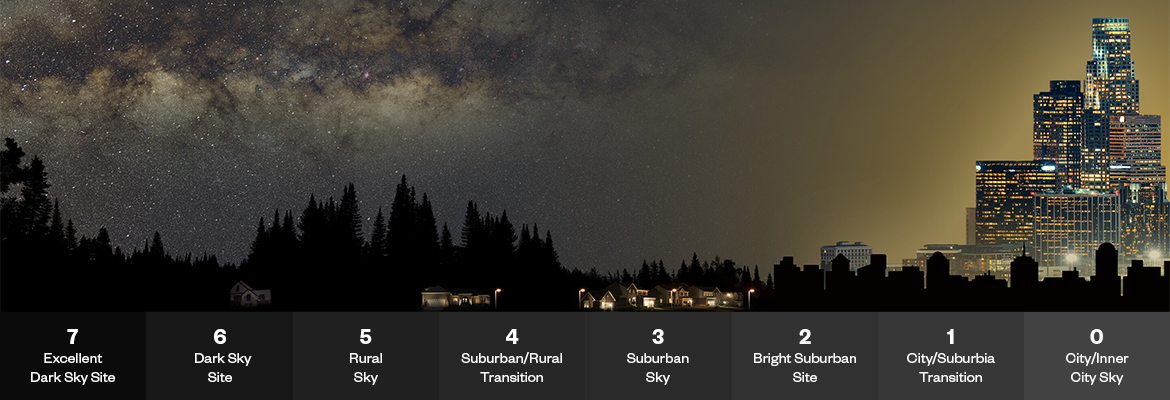
Graphic showing how light pollution can impact our ability to see stars and other objects in the night sky. © NOIRLab
Light pollution, which can be defined as inappropriate and excessive use of artificial light, has many adverse consequences. These include negative impacts on human health and, damage to natural ecosystems, and wasted energy. It also contributes to skyglow, preventing views of the night sky.
Health and wellbeing
Poor lighting, particularly in the form of light intrusion into homes, can be harmful to the health and well-being of people through disruption of their circadian rhythms – the natural sleep-wake cycle. In addition, this light intrusion, alongside the effects of glare, can cause significant discomfort.
Impact on the natural world
Light pollution can also seriously impact the natural world by changing the natural habitats of plants, animals and insects. A growing body of evidence has shown that poorly designed lighting can ultimately lead to declines in the populations of many native species and a reduction in biodiversity.
Wasted energy
An additional consequence of light pollution is that light directed upwards does not fulfil its purpose and wastes energy as a result. This not only has an environmental impact through an increased carbon footprint but also has financial implications for those responsible for lighting at a time when energy costs are a major concern.
Skyglow
One of the most widespread problems caused by poor lighting is the inability for people in many urban areas to see the night sky. A major contributor to the ‘sky glow’ brightening of the sky is light directed upward from exterior lighting. Cooler colour temperatures, those with greater blue light content, can also exacerbate the issue.
By controlling light effectively, eliminating wasted energy and ensuring light levels and colour temperatures are appropriate, specifiers can improve the well-being of people, protect biodiversity and reduce environmental impact. At its core, lighting responsibly is about delivering the right light, in the right place, at the right time.
At DW Windsor, lighting responsibly is a core issue for us, and we strongly believe that our role as a manufacturer is to provide the tools and guidance to support designers and end users with responsible lighting. This also includes helping to educate key stakeholders and advocating for the use of the latest innovations to make high-quality, responsible lighting a reality. We aim to work in close collaboration with those involved in a project, drawing on the collective experience and expertise of everyone.
How to light responsibly?
There are five key areas where we can help customers to be more responsible and sustainable in their lighting design:
Our Light Responsibly strategy aligns with the principles of the Responsible Outdoor Lighting At Night (ROLAN) Manifesto:
A combination of all the Light Responsibly areas can help designers maximise the positive benefits of the project.
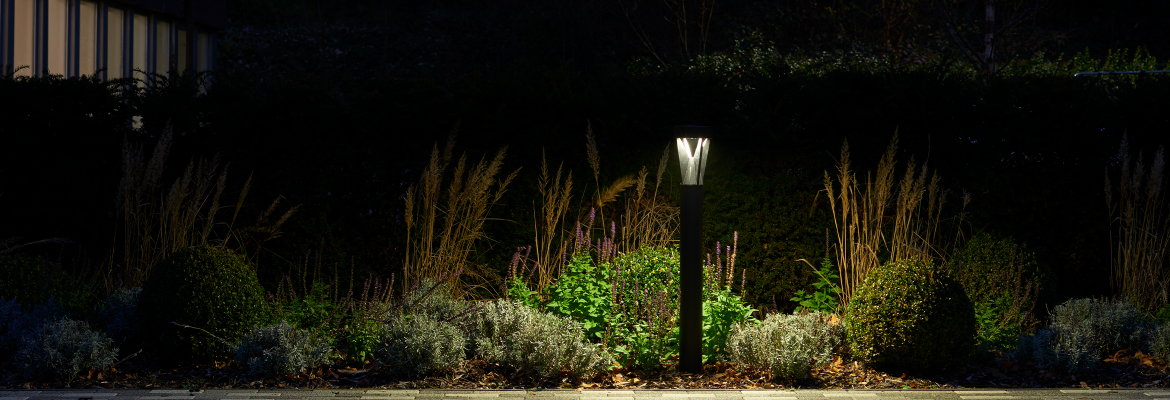
Our Pharola DS which is DarkSky Approved and provides 0% upward light output
As laid out in the ROLAN manifesto, it is important that ‘light is only directed to where it is needed’ to reduce light trespass.
Light trespass can have an impact on people, with the first and most obvious effect being the discomfort caused by glare. Light intrusion into homes also has the potential to disrupt sleep patterns. This has been linked to poor cognitive performance as well as an increased likelihood of cancer, cardiovascular disease, diabetes and mental health issues.
In addition, light directed upwards contributes to the sky glow over towns and cities, making it impossible to see features of the night sky that should be clearly visible.
There is also increasing awareness of the potentially serious impact that irresponsible lighting can have on wildlife by disrupting normal behaviours. Bats are particularly affected by indiscriminate illumination of large areas as it will restrict their movement and ability to forage. Similarly, light pollution is having a serious impact on the insect species that are crucial for biodiversity. In a recent study, over-illumination of hedgerows was found to lead to reductions in moth caterpillar numbers by as much as 52 per cent.
Controlling light effectively is a key part of minimising light trespass and its negative effects. We can help customers achieve this by offering a range of optical distributions plus optional light shields to ensure light is directed where it is needed. For example, our Diamond+ optics technology provides a wide range of standard optical distributions for ultimate flexibility and precise lighting control for a wide array of applications including illumination for motorways, footpaths and cycle paths, car parks, residential areas and public realm spaces.
Organisations such as DarkSky (formerly the International Dark-Sky Association) are working with the lighting industry to eliminate upward-directed light. We are proud to say that several of our products achieve 0% upward light output (ULOR) and are DarkSky Approved. These product certifications help specifiers identify lighting products that will not contribute to sky glow.
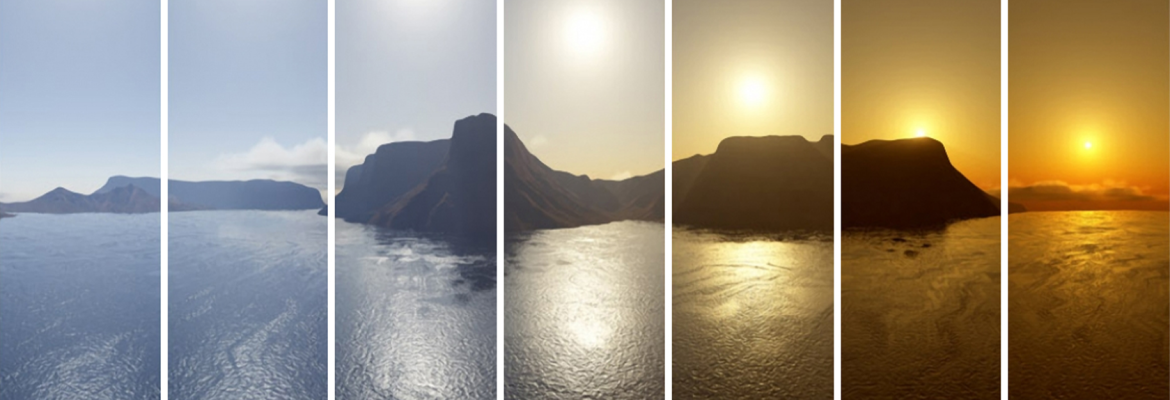
Finding the right colour temperature for any scheme is integral not only for design but for wellbeing of the natural environment and our bodies
Another crucial consideration is the quality of the light. This includes factors such as the colour temperature, colour rendering, light levels and flicker.
The colour temperature of light can have an impact on people by disrupting our natural circadian rhythms. Our bodies respond to the changes in light throughout the day to control sleep and support health and well-being. The blue light present in morning light stimulates alertness during the day, while the warmer colours in evening light ready the body for sleep. Too much blue light in the environment, including light trespass from outdoor sources, can inhibit these natural responses, leading to the negative health effects mentioned above. The levels of blue light found in LEDs are closely linked to the colour temperature of the light source. For example, the blue light content of 3000 Kelvin (K) lighting is as much as 40% lower when compared with 4000K and 5000K lighting, with 2700K being as much as 55% lower.
Lighting with a low Colour Rendering Index (CRI) is also an issue. CRI is the measure of the degree to which lighting accurately renders the colour of an object compared with natural light. Low CRI generally distorts colours and makes similar shades appear the same, reducing the ability for people to perceive objects clearly.
Lighting that is too bright can also cause an issue. Higher lighting levels are often specified under the misconception that it will improve safety. In fact, the glare of bright lighting can actually reduce visibility and, therefore have the opposite effect.
We are committed to offering a range of lighting solutions that help to deliver high-quality lighting suitable for the application, including modern LEDs that provide flicker-free, high CRI light. We also offer flexible lighting drivers to enable the optimum light output to be achieved. Finally, we offer a range of colour temperatures, including warm colour temperatures as low as 1800K, which are now far more efficient thanks to recent advancements in LED technology, making them a viable alternative to cooler colour temperatures.
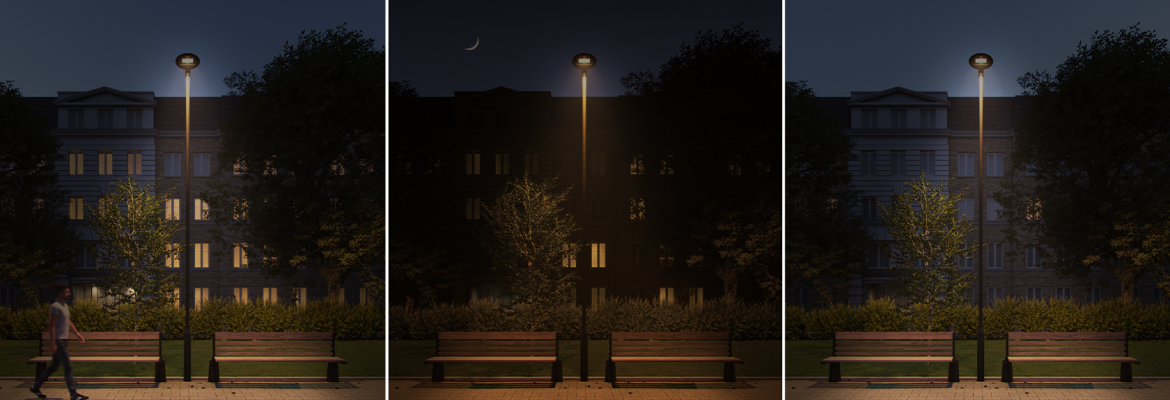
Daytona offers tunable white technology to provide the desired coloured temperatures over the course of one night
The requirements for light are not fixed and can be different depending on the time of day, or activities being performed. Light should be able to adapt to meet these varying needs, not only in terms of brightness but also colour temperature.
Higher levels of white light may be appropriate during peak hours to improve safety and security when people are moving around but is unnecessary during the night when human activity is minimal. In addition, excessive illumination at the wrong colour temperature during the night increases the impact of lighting on the natural world and also leads to wasted energy.
An important part of lighting responsibly is designing illumination that can be adapted to balance the need for high-quality lighting for safety and security with the need to minimise the impact on the natural world.
At DW Windsor, we have developed tunable white light engines that allow both warmer and cooler colour temperatures to be achieved. This tuneable light can be combined with controls to allow changes in brightness and colour temperature to be scheduled throughout the night. This allows illumination that begins with a cool white light at full brightness in the evening, transitions in stages to a warmer, softer light with reduced brightness overnight and then back again to cool white in the early morning.
Lighting controls can also be used to provide dynamic management of the illumination and ensure that the lighting is only used when it is needed. These can range from simple motion sensors to advanced connected smart-city controls. For example, integrating sensor modules into lighting fixtures allows data to be gathered that can inform the lighting strategy for an area.
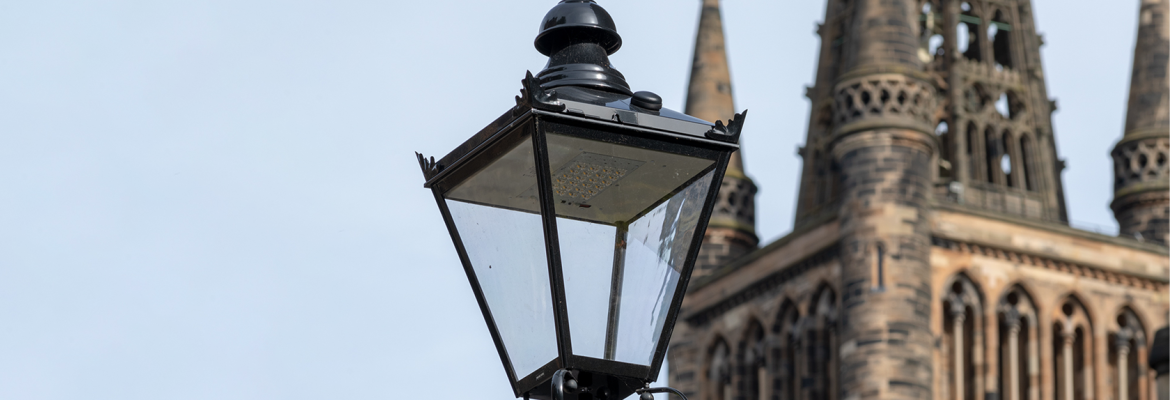
DW Windsor offers a range of controls, from nodes to full CMS programmes, that will help with energy efficiency and cost savings for any scheme
It has never been more important to reduce energy usage and carbon emissions. With the 2050 deadline for achieving net zero now less than 30 years away, pressure is being placed on businesses and the public sector to find more energy-efficient solutions. This need has been made more acute by the rising costs of energy. Currently, lighting is responsible for nearly 5% of global CO2 emissions and public lighting accounts for around 20 to 40 per cent of a municipality's energy bill.
At DW Windsor, we focus on delivering the most efficient lighting possible by pairing high-quality LEDs with the latest electronic control gear. We also support our customers in upgrading existing lighting to achieve significant energy and cost reductions to optimise whole-life costs and provide a short return on investment. In fact, LEDs can offer a 62% energy saving while delivering the same level of illumination when compared with high-pressure sodium products. With energy prices rising, the scale of the cost saving is now greater than ever.
In addition, DW Windsor has recently launched a range of off-grid solar-powered lighting solutions, offering a sustainable, environmentally friendly alternative to traditional cabled solutions. With no need for cabling or connection to the grid, solar-powered lighting can bring light to any location, making it ideal for remote or environmentally sensitive applications. And with zero emissions and no ongoing electricity costs, solar lighting is fast becoming a viable solution for organisations looking to reduce their annual electrical expenditure and cut carbon emissions.
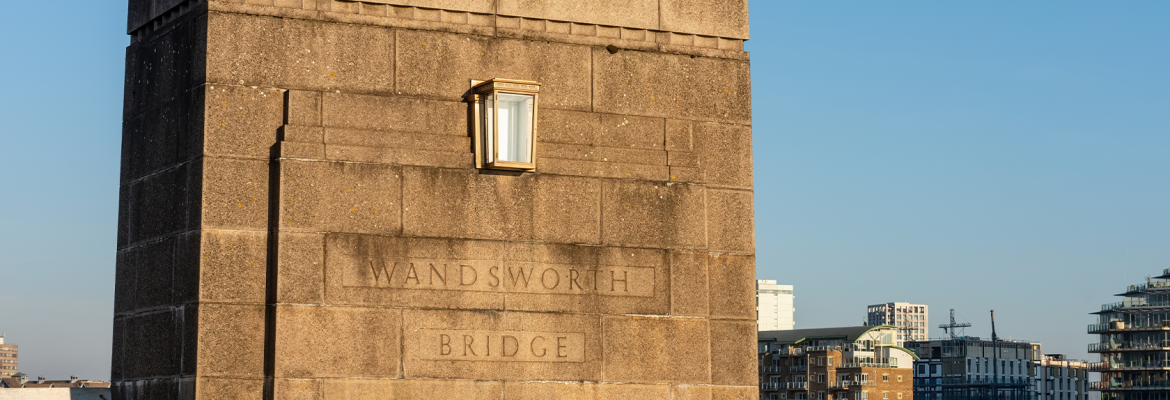
DW Windsor works with expert craftsmen to upgrade and reuse luminaires that will keep traditional design and encourage circular economy
The issue
Lighting responsibly goes beyond providing safe and comfortable illumination that minimises the impact on the environment. Specifiers also need to consider the embodied carbon and waste impact of the material and product choices.
In particular, the concept of circularity in lighting is now receiving increased attention. The aim of a circular economy is to: “Keep resources in use for as long as possible, extract the maximum value from them while in use, then recover and regenerate products and materials at the end of each service life.”
We are continually developing our range of products to improve circularity in line with CIBSE Technical Memorandum 66 (TM66) developed by the Society of Light and Lighting (SLL) and supported by the Lighting Industry Association (LIA).
TM66 provides guidance on introducing circular economy principles across the lighting sector. Much of the emphasis on circularity has been focused on the end of a product’s lifecycle through the recovery and recycling of its materials. However, creating products that will last, can be upgraded as technology advances and be serviced and repaired easily has a key role to play in ‘keeping resources in use for as long as possible’. For example, our products that are designed with interchangeable light engines allow customers to benefit from the latest in energy-efficient LED technology without the cost and waste of replacing the whole luminaire.
Furthermore, at DW Windsor, we follow a ‘less is more’ approach to product design, optimising the design of our luminaires to reduce the number of parts and materials needed without compromising functionality or quality. In addition, we utilise materials which are highly recyclable, such as aluminium and copper, while keeping the use of plastics to an absolute minimum. We also use recycled materials where possible. For example, our Kirium Pro S is manufactured from 100% recycled aluminium.
Finally, to keep products in use for as long as possible, we also offer expert restoration services. The aim is to retain as much of the original luminaire as possible while bringing it in line with modern requirements and standards.
Light is an essential part of our urban environment, whether ensuring safety and security or supporting the night-time economy. However, it is just as important that this lighting is designed and implemented correctly. At DW Windsor we are committed to tackling the challenges we currently face and helping our customers to Light Responsibly.
To find out more about our commitment to light responsibly and our range of LED lighting solutions, visit www.dwwindsor.com.